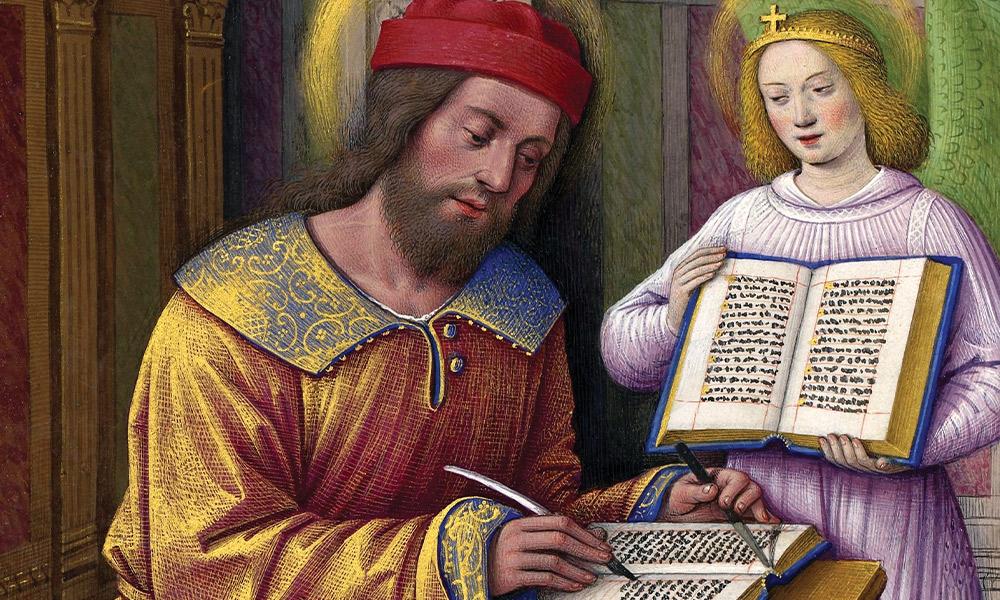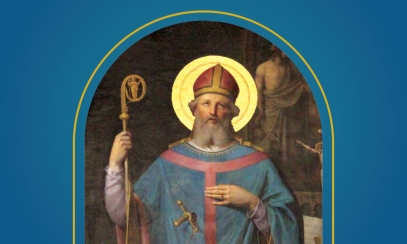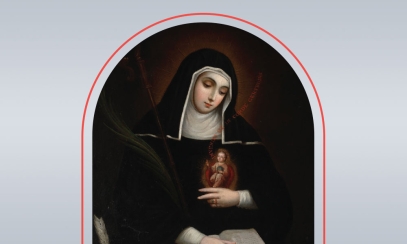
St. Matthew Apostle and Evangelist
Feast Day – September 21
Feast Day – September 21
According to the Gospels of Mark, Luke and Matthew, Jesus saw a tax collector sitting at his customs post and said, “Follow me.” The tax collector immediately left everything behind and not only followed Jesus, but hosted a banquet for Jesus, inviting “a large crowd of tax collectors and others.” This tax collector is called Levi in the Gospels of Mark and Luke, and Matthew in the Gospel of Matthew.
As a Jew who collaborated with the Romans by collecting taxes, Matthew was considered an outcast and a traitor by his Jewish brethren. Tax collectors were known to charge extra fees they kept for themselves, so they were even more despised for their greed and exploitation of their power.
But Jesus singles out Matthew to follow him, and Matthew responds completely. He begins evangelizing immediately — inviting his peers, also despised in the eyes of the Pharisees — and other “sinners” to share a meal and an encounter with Jesus. When challenged for associating with such a crowd, Jesus admonishes the self-righteous religious by responding with words from the prophet Hosea, “Go and learn the meaning of the words, ‘I desire mercy, not sacrifice.’ I did not come to call the righteous but sinners.” (Mt 9:13) Matthew is not mentioned otherwise in the New Testament, except in each Gospel list of the apostles. In the Acts of the Apostles, we learn that Matthew is present with the apostles when Jesus ascends into heaven and when the Holy Spirit descended on them.
Tradition holds that Matthew preached the Gospel among his fellow Hebrews in Judea before evangelizing in Ethiopia where he was martyred. The painting The Calling of St. Matthew, by Italian master Caravaggio, was completed in 1600 for the Church of San Luigi dei Francesi in Rome, and it still hangs there. The beloved painting continues to be studied today by students of art history, and prints can be found in chapels, churches and homes throughout the world.



